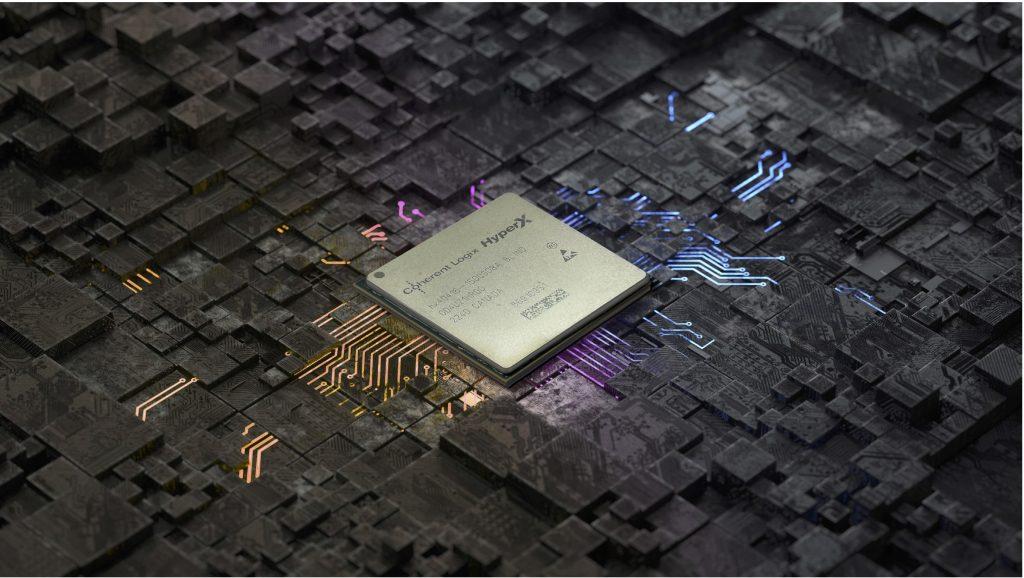
- December 23, 2025 5:39 am
- California

According to a major new climate report released by the United Nations, smart devices have a role to play in the move from dirty to clean energy. The report says that to avoid climate change so intense that humans and ecosystems would struggle to adapt, humans need to slash their planet-heating pollution in half this decade. Hundreds of leading climate scientists who authored the report called for those emissions to peak before 2025, and virtually vanish by 2050. Meeting those goals will significantly change how we power our homes and devices. Not only do we need to replace fossil fuels with clean energy, but we also must use less energy in the first place.
Edge computing is exploding, both in space and here on Earth, but one can’t allow the growth of AI and IoT to come at the expense of the environment humans need to sustain. New edge devices expected to grow to ~30 billion devices in the next six years need incredible computing capability but must run at much lower power, creating significantly less heat than ever. Walt Gall, Chief Executive Officer (CEO) and Michael Doerr, Founder, President and CTO of Coherent Logix, saw the problem and went on to create low-power, high-performance, C-programmable processors for the embedded systems market. How does it help the Earth, you ask? Read on.
Commercialization of space has taken off – the Space 2.0 market has doubled in the last ten years to nearly $500B. It is forecasted to be over $1 trillion by 2030 and scaling fast (5X satellites in the previous five years and 10X before the decade’s end). The attributes required for success at the space ‘edge’ have turned out to be the necessary attributes for terrestrial edge computing, presenting an even larger market and a crucial role to play in managing the
global warming effects of the expansion of the terrestrial edge infrastructure. The Internet of Things (IoT), 5G and AI trends are driving the demand for scalable, low latency workloads from embedded systems to the cloud. Sensors are everywhere now – in cars, robots, homes, and IoT/Industrial IoT devices -and contributing to a projected 16 billion net new devices by 2030.
“Coherent Logix finds itself ideally positioned to make a real difference in the world both by enabling the Space 2.0 software-defined revolution, and by making it possible to add billions of new devices on Earth using low-power, high-performance computing (HPC) so humans can realize a more widely connected ‘Smart-everything’ future without making the planet hotter than it already is,” Walt explains. The company’s technology is delivering more scalable systems that are software-defined from embedded to edge to cloud with a unified programmable HPC architecture and a mature software toolchain.
Creation Of Coherent Logix
Walt discusses how Coherent Logix’s new semiconductor design was discovered by US government (USG) and its major defense industry stakeholders. He explains that USG’s Defense Advanced Research Projects Agency (DARPA), a known partner and funding source for industry innovators spearheading many vital inventions including the Internet, had programmable HPC hardware requirements that key industry players’ traditional von Neumann computer chips could not address. Due to the proven value of Coherent’s novel low-power supercomputing architecture for various military agencies’ embedded applications, DARPA, NASA, and Air Force Research Labs provided a seminal design win to the company to further validate its massively parallel data-streaming architecture beyond terrestrial devices. This enabled the US Department of Defense and the industry’s top system integrators to leverage our “red- and black-security certified” technology solution and take it to new heights into space to support next generation connectivity and high-speed communications for national security.
Taking inspiration from the human brain, a chip was designed to be event-oriented or attention-based in that it expends energy only when processing workloads and quiescent when not. It optimizes its use of resources (processor utilization at over 95%) and minimizes energy usage in proportion to the workload presented. And hence the conception of the first HyperX processor design. Between 2005 and 2015, the company worked on projects for major USG contractors. In 2009, Coherent Logix sent its first processor to space on the Space Shuttle Atlantis, which delivered the HyperX chip to the International Space Station, where it has run successfully since its launch.
Convergence is everywhere, and it is accelerating. “This requires a new approach to both hardware and software. Even specialized hardware like ours now must be general purpose, and the software built by different experts (e.g., communications + machine vision + 5G + cybersecurity for a satellite) must be able to be seamlessly integrated both with each other and with the specialized hardware,” he says.
Convergence is happening between terrestrial and space use cases as well, and humans are in the process of establishing permanent residency in space. “It’s a beautiful thing to see that methods learned in space are the key for saving our home planet, and it’s a privilege for Coherent Logix to work on providing solutions for such challenging issues,” he explains. “HyperX accelerates convergence by enabling OEMs and ODMs to differentiate their solutions themselves, both in development and in the field.”
HyperX development is highly efficient through an amalgamation of hardware architecture and an abstracted development process, enabling faster development with less resource mapping complexity. HyperX Studio™ provides the tools needed to utilize C-programming, cycle-accurate simulation, modular, reusable hardware and software co-design, parallel application development, software debugging and the incredible time-to-market efficiency of using the same processor for design, development, and deployment.
In the field, HyperX excels with wideband I/O, re-programmability on the fly, <50ns task switching, ultra-low power consumption, and enough compute and multimodal flexibility for significant in-field upgradeability. Coherent’s HyperX technology reduces the time and cost of development by 75% compared to the leading FPGAs. That is a 4 to 1 development cycle advantage or a 75% operational expense cost advantage. Winning at convergence requires flexibility and speed to market, reconfigurability in-market, efficient chip-chiplet development, and a low Size-Weight-Power (SWaP), low-cost BOM profile. HyperX ticks every box.

The Unique Solutions
The company offers powerful Systems on Chips (SoCs) and a software suite for creating customized solutions. And the current flagship is HyperX Midnight, a radiation-hardened supercomputer class SoC designed for use in LEO, MEO, and GEO (low-, middle-, and geosynchronous earth orbit) satellites.
HyperX Midnight, soon after its release, became the most advanced space processor available, with roughly four times the computing throughput at half the power demand of competitive chips.
“This is a significant step, as performance and power consumption control the magnitude of a satellite. We put enormous performance in a small package with low power obligations, so our customers can use much smaller satellite busses (chassis) which conserves millions in launch budgets,” says Walt. Another key feature of Coherent’s HyperX multi-chip modules compared to its competitors is that its chips are C-programmable and use familiar tools and debugging processes. “The solutions can be built on our chip in about 6 months whereas competitive FPGA offerings usually require 24 months of development time using complex hardware development languages and a very difficult process called timing closure,” he adds.
Coherent Logix’s SoCs are also completely reprogrammable, even in space, and can modify tasks in less than 50ns (nanoseconds). These two elements combine to create a huge advantage. Coherent Logix can make four products in the time our competitors take to build just one, and we can continuously enhance those products even if they are in orbit around the Earth.
These attributes herald back to Coherent Logix’s patented invention: the HyperX fabric. And this fabric is common to all Coherent Logix’ chips – both Space-qualified and terrestrial – so these advantages are available whether users are building a satellite, 5G cellular, secure networks, AI platforms, or 8K video encoders. Coherent Logix has served the Space 2.0 and Defense markets for 15 years. High-performance computing (HPC) with low power draw, on-orbit programmability, and ease of modular multimodal MCM design are the keys to success in these markets according to Walt.
The Leader who Makes the Difference
Walt Gall, Ph.D. serves as CEO on Coherent Logix’s executive management team. He is a business leader who builds world-class AI teams, products, and strategic partnerships for top-tier start-ups (Saffron, Intel acquisition) and large corporations (Amazon Devices, Meta (formerly FB).
As CEO of Coherent Logix, the leader in low-power, high-performance C- programmable processors for the embedded systems market, he recently helped guide the company through a funding initiative that raised $85 million.
Under Walt’s leadership, in early 2023 Coherent Logix launched HyperX Midnight, the world’s most advanced space processor, with roughly four times the computing throughput at half the power demand of competitive chips. Coherent Logix is currently in its fourth generation of HyperX processors for Space 2.0 and Defense, Connected Devices, and Media & Communications industries. The company has been granted more than 375 patents and 125 patents are pending.
Over the past decade, Walt has held various leadership roles on executive teams, including Amazon Alexa AI, Meta’s AR/VR and AI divisions, and Intel AI, with responsibilities for annual operational planning, developing a 3-year strategy, and managing more than $500M R&D and production budgets. He led product launches on conversational AI voice assistants on industry-leading consumer and social media devices with cloud-to-edge embedded applications and the development of several enterprise decision-support AI/IOT solutions in wellness, health, hi-tech, and insurance sectors.
Walt’s leadership style is centered on the customer and making data-informed, timely decisions. This customer-centric team approach is critical as the company scales its products and continues to expand its channel partnerships. “I’m referring to our direct customers and strategic partners, our leadership team and employees, and our Board of Directors,” he adds. “We have a collective interest in growing revenue and partnering on developing and commercializing products that have a meaningful impact on society.”
Armed with this mindset, Walt and the rest of the leadership team have skillfully guided Coherent Logix into hypergrowth markets: Space 2.0, cybersecurity, connected devices, media and communications.

Towards the Future
Coherent Logix is adding a cloud-based capability for new customers, universities, and the Maker/open-source community to work with their development tools and hardware. With older von Neumann microprocessor architecture designs and today’s programmable hardware, the software development process is so tedious that it can take 24-36 months for a customer to develop a solution e.g., a WiFi router. Coherent Logix microprocessors, however, have C-programmability and use standard software development processes. They also offer a cycle-accurate simulation platform. These advantages enable Coherent Logix to build solutions in just six months and continue to reprogram or reconfigure as needed to support their product and customer roadmaps with new software-defined functions or as standards evolve. This, combined with the hardware/software co-design process the company uses to build their System on Chips (SoCs), brings the power of digital transformation to the design and use of digital processors – amplifying both the pace of innovation and the competitive advantages of Coherent Logix.
For the near future, Walt is striving towards building highly functioning, distributed teams to bring the most disruptive products to market he has worked on, i.e., a new class of low-power, reprogrammable, high-performance computing devices. Coherent Logix is enabling customers to “redefine hardware as software” (which is also the company’s tagline) to meet the market demand for the flexibility, extensibility, and scalability of software-defined hardware systems and their small SWaP requirements, ranging from space satellites to consumer devices. Coherent Logix’s HyperX architecture provides a paradigm shift in hardware-software co-design from embedded systems to the cloud and delivers a more cost-effective and scalable software-defined device strategy. With its compute and memory co-localized, an event-oriented, parallel processing fabric, low power profile, and C-programmability, this has a 2-4x improvement in the time it takes to develop and launch products. This multi-faceted value proposition extends product customer lifetime value economic models, increasing the ROI for its ODM and OEM partners and customers. Accomplishing these product revenue growths and customer-centric goals will lead naturally to the longer-term goal of positioning Coherent Logix for a successful market exit for its shareholders.
“The future requires low-power, high performance computing for next generation connected devices – it will be everywhere we find a sensor, a camera, a robot, or smart device. As large as the Space 2.0 revolution is, the terrestrial edge and embedded devices will eclipse it by orders of magnitude,” concludes Walt. “We must be as efficient with power as possible. It has a cost to our planet to produce, and it turns into heat when you use it. If we want to preserve our planet, smart everything must become smart, efficient everything.”

" Coherent Logix finds itself ideally positioned to make a real difference in the world both by enabling the Space 2.0 software-defined revolution, and by making it possible to add billions of new devices on Earth using low-power, high-performance computing (HPC) so humans can realize a more widely connected ‘Smart-everything’ future without making the planet hotter than it already is. "
Walt Gall
CEO